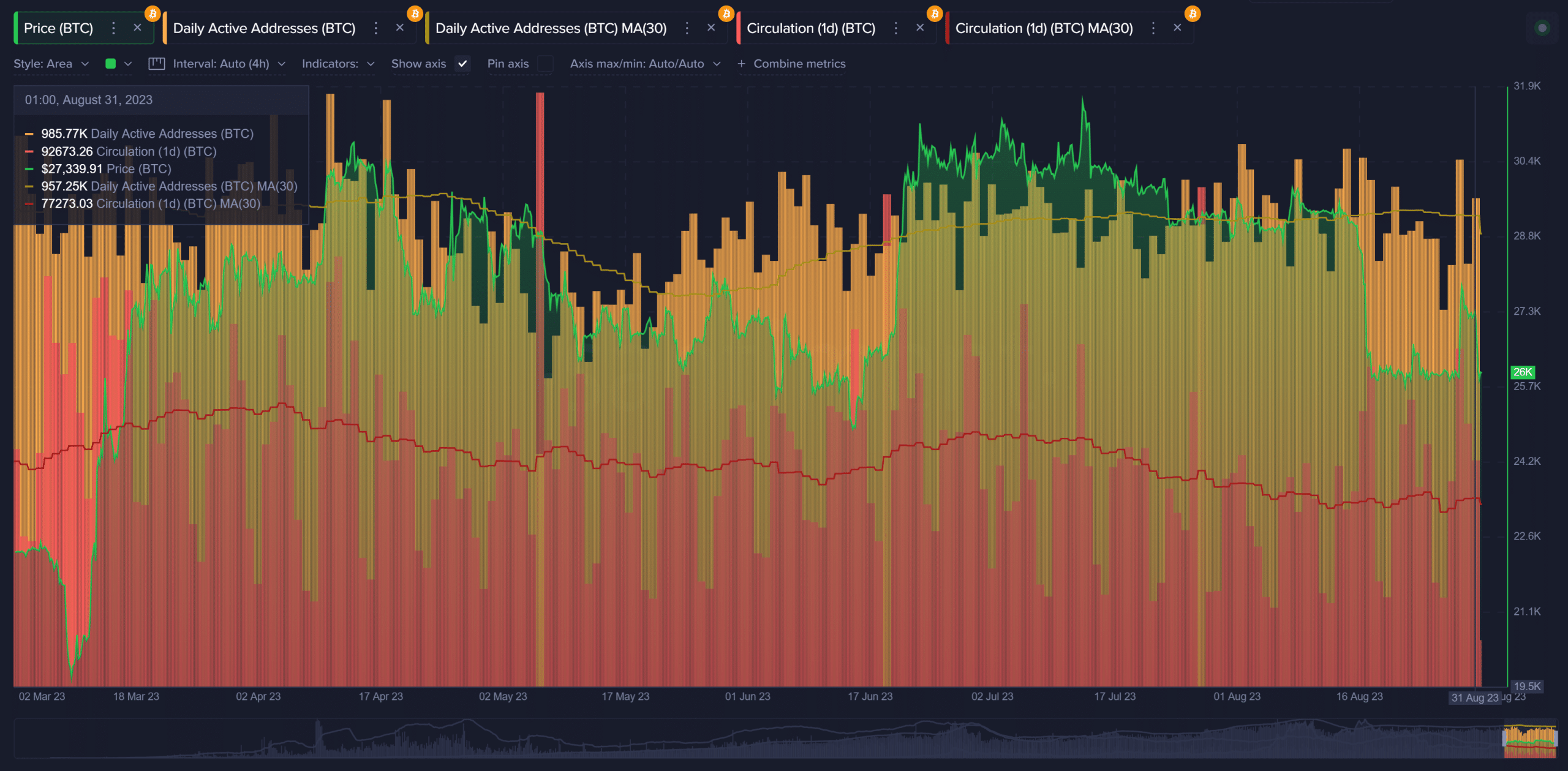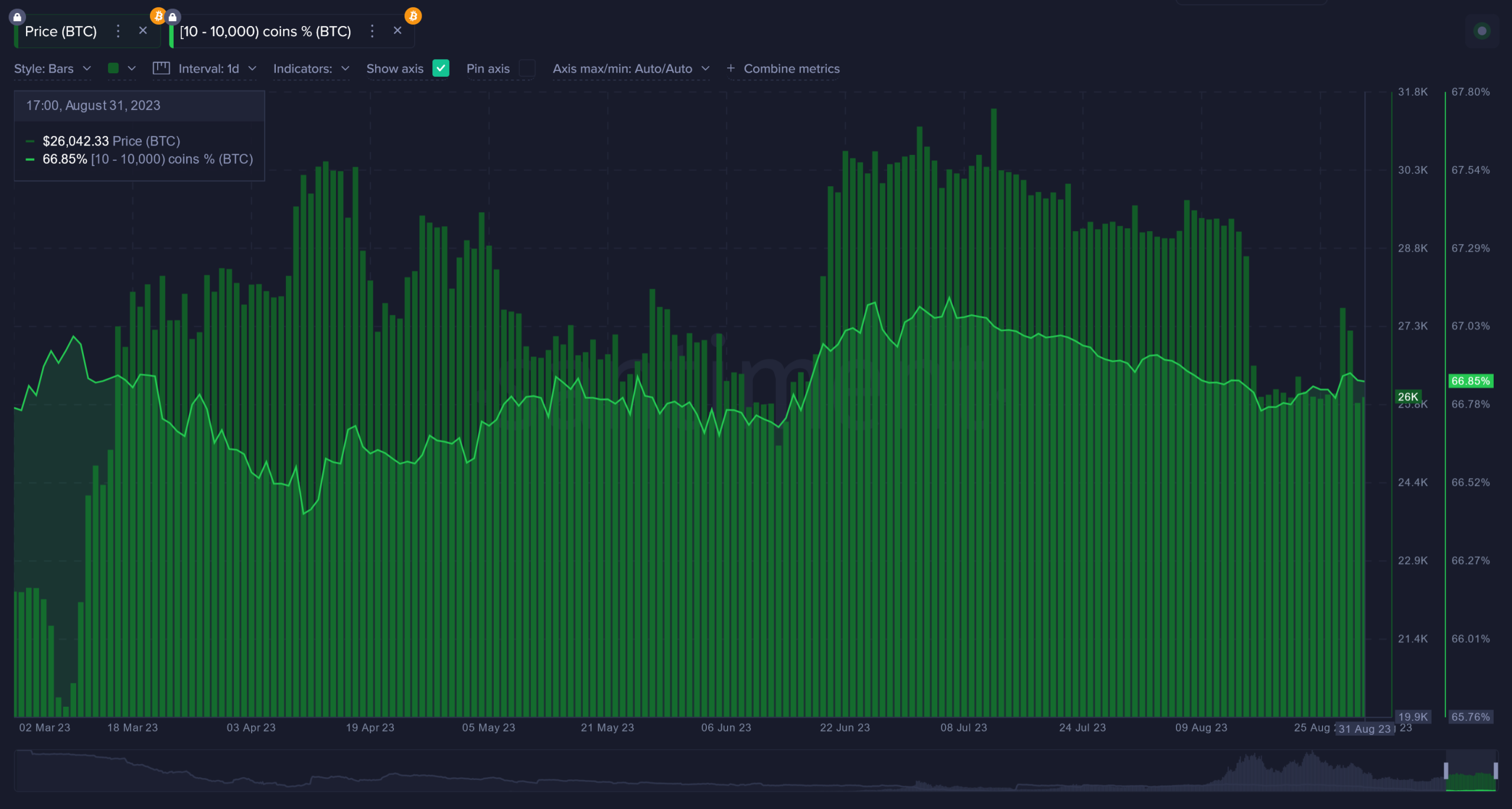- August was a bloody period for Bitcoin as FUD and negative sentiment prevailed. This caused the coin to lose 10% of its value in the last 30 days.
- Approximately 957,000 unique addresses interacted with the BTC network on a daily basis. This high usage was a positive sign in a market that experienced several price corrections.
- Since August 17, Bitcoin whale and shark wallets holding between 10 and 10,000 BTC added 0.1% of the current Bitcoin supply to their wallets.
Bitcoin left behind a challenging August; will September be as tough? Metrics are bullish!
August Was a Challenging Month for Bitcoin Price
August was a bloody period for Bitcoin as FUD and negative sentiment prevailed. This caused the coin to lose 10% of its value in the last 30 days. Furthermore, Santiment’s latest analysis noted that words like “bull trap” were mentioned multiple times in August. The four biggest instances of these keyword mentions occurred just before the markets experienced a downturn.
Despite the prevailing downward trend in August, Bitcoin resisted well in terms of daily active addresses. Approximately 957,000 unique addresses interacted with the BTC network on a daily basis. This high usage was a positive sign in a market that experienced several price corrections.
The whale and shark activity in the past month was also a notable measure. Since August 17, Bitcoin whale and shark wallets holding between 10 and 10,000 BTC added 0.1% of the current Bitcoin supply to their wallets.
According to Santiment’s analysis, this means adding 26,299 BTC in just the past two weeks, which is worth $687 million.
Will September Be Different?
However, despite the significant increase in whale accumulation last month, its effects have not been seen yet. BTC’s start to September was also not good as the price chart remained in the red.
According to data, BTC rose by 0.8% in the last 24 hours. At the time of writing, it was trading at $26,860 and had a market value of over $506 billion.
According to CryptQuant, BTC’s exchange reserves were decreasing, indicating that it was not under selling pressure. BTC’s aSORP indicated more investors were selling at a loss, which is a sign of a market bottom. Additionally, BTC’s binary CDD was green, indicating that long-term holders’ movements were below average in the past seven days.
However, a look at BTC’s daily chart raised concerns. For example, Bitcoin’s Relative Strength Index (RSI) was moving horizontally below the neutral mark, indicating that the current price trend could continue. While its MACD showed the possibility of a bullish crossover, the On Balance Volume (OBV) was low, both of which were developments in favor of sellers.


